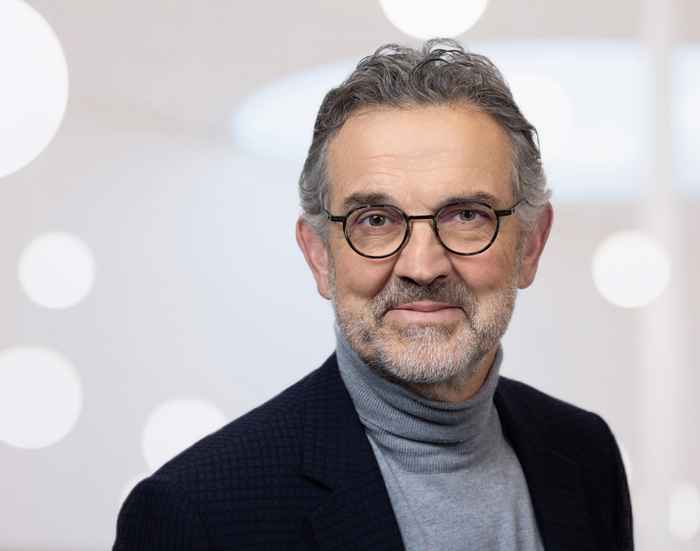From 10 students to a waiting list: the success of strategy consulting
Course coordinator Peter Beerten on academic thought and practice
26 April 2024

Now he is, in his own words, ‘knee-deep in the academic world’. Together with Pepijn van Neerijnen, Michiel Tempelaar and Marten Stienstra, he is responsible for the syllabus of Strategy Consulting. In this course, students get together in working groups and they set out to solve real-world problems. This year, they will be tackling a case from KPMG and a case from Accenture.
Learning every day
Beerten has now been involved in this subject for 5 years but is still extremely enthusiastic. ‘Each and every day, I learn something myself as well,’ he says. ‘The passion shown by my students and the ideas they have also affect my own job satisfaction. And then there’s the commitment of the consultants, who routinely ask if they can take part again the following year. It’s a question they also ask out of self-interest as you might expect. After all, it’s an opportunity for them to discover talent at an early stage. Some students are offered a job as soon as they’ve finished the course. A while ago, I asked them why the subject is so popular. I’d expected them to mention the combination between theory and practice but they cited something else they considered important, namely being given responsibility and learning how to solve problems.’
KPMG and Accenture
This year, the students have got their teeth into 2 problems. KPMG has asked students to put their heads together to find ways of facilitating the settlement of claims by the Instituut Mijnbouwschade Groningen (IMG or Groningen Institute of Mining Subsidence). In addition, they should think about how IMG can continue to play a role for Groningen in the future. The other case is courtesy of Accenture. It is again a topical issue but the client’s name has to remain anonymous. The case deals with a medical business facing challenges in terms of their image and reputation. Students are also expected to brainstorm a future-proof strategy. The course involves more than just thinking about cases. There will be guest speakers from the consultancy sector and there is a speaker’s corner where students are kept abreast of new developments and can reach out to consultants.
From 10 to 80
For next year too, consultants are already queueing up for the privilege of providing a case. It is a long way from the early days, when Beerten really had to search through his own network and get companies excited about submitting a case. In that early period, 10 students, 15 tops, enrolled on the course. Now, there are 80 students every year ready to go and sometimes there are no places left so students are put on a waiting list. Beerten observes: ‘We prefer to work with 16 groups of 5 students each. Every group is coached by a tutor. We’ve noticed that many students find it challenging at first to work together in a group. A typical question is: “Can’t we do this on our own?” They often feel their way through the early stages. But as the project progresses, you sometimes see the emergence of groups that are solid as a rock, keep getting better at communicating and form a cohesive unit.’
Getting used to academia
As for himself, Beerten too has always looked for support to enable him to get settled in academia. He explains: “I really had to get used to it and have had a lot of help from my colleagues. Pepijn has really shown me the ropes and taught me to change my way of thinking. It was my habit to give practical examples off the top of my head but, of course, it doesn’t work that way in the academic world. You need to let go of all suppositions and only work with sources that have been verified. I had to learn to use more robust examples. In the meantime, I’ve even started a PhD and you could say I’m knee-deep in the academic world. But I’m also still very fond of the real world. And it’s a fondness I share with many students. They tell us that what they need is a combination of academic literature surveys and practical skills.
‘I also think this is what we need to offer if we want to retain students. We mustn’t forget the balance between theory and practice. I think this is necessary to avoid losing students to other business schools such as Luiss Business School Amsterdam, Amsterdam Hogeschool or Utrecht Hogeschool. I know that at Utrecht, they have a very interesting combination of consultancy and digitisation. It’s important to listen carefully to students and see which area they want to go into. Sometimes, students from other faculties or even VU enrol on this course. This isn’t allowed but it does show that there’s a demand for what we offer. And it’s not only extremely worthwhile but also extremely satisfying. The energy created during the course reflects on everyone who contributes to it: regular lecturers, guest speakers, students and consultants.’